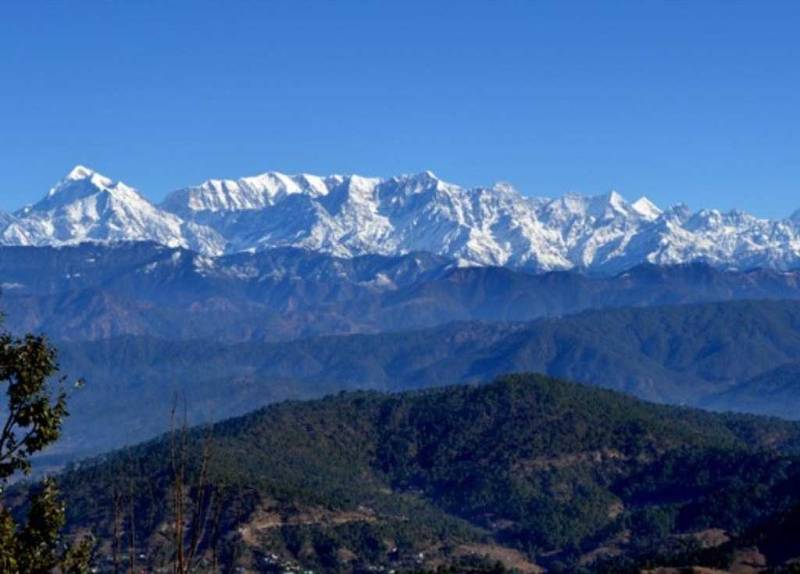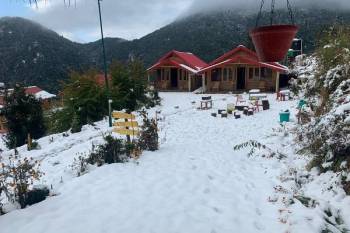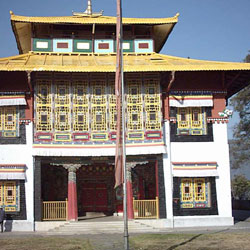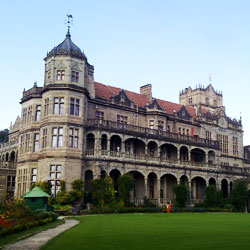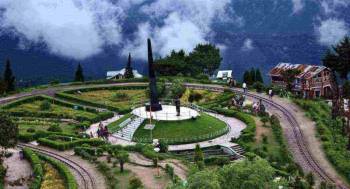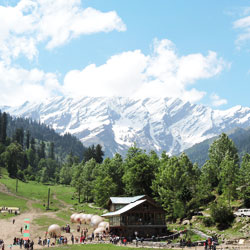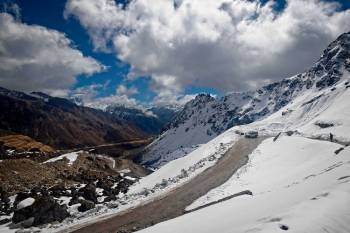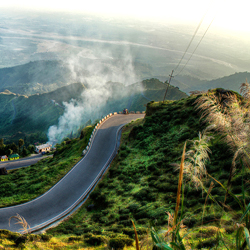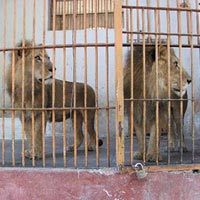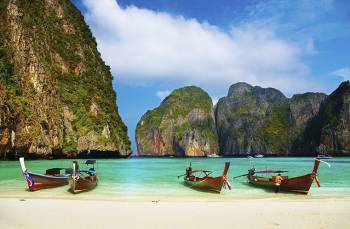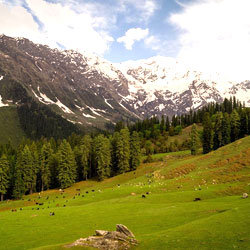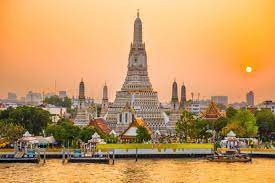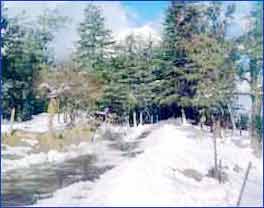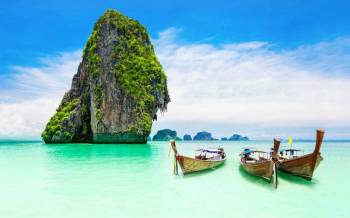- Kolkata, West Bengal
- +91-8296564536
Nainital - Kausani - Corbett 7 Days Tour
Duration : 6 Nights / 7 Days
Destination Covered : Nainital, Kausani, Corbett, Snow View Point, Corbett National Park
Tour Activities : Jungle Safari, Mountaineering
Tour Themes : Wildlife, Hill Stations & Valleys
Price on Request
Nainital, Kausani and Corbett Tour Overview
Nainital is a town and headquarters of Nainital district of Kumaon division, Uttarakhand, India. It is the judicial capital of Uttarakhand, the High Court of the state being located there and is the headquarters of an eponymous district. It also houses the Governor of Uttarakhand, who resides in the Raj Bhavan. Nainital was the summer capital of the United Provinces. A popular hill station, Nainital has numerous tourist spots including Nainital Lake, Naina Peak 8622ft, The Selva Valley, Hanumangarhi and Pt. G.B. Pant High Altitude Zoo, Nainital. Nainital is Kumaon's most well known hill station, and its premier tourist destination.
The Nainital Yacht Club, situated along the lake, is run by the Boat House Club. It is the highest yacht club in India and among the highest clubs in the world. It was founded in 1910 by the British and, till 1970, was only open to members. Today, tourists can pay for a sailing session on the yachts.
The Jama Masjid of Nainital is located in Mallital area of Nainital is a mosque which was built in 1882 during the British Era for Muslims around Nainital. Over the main entrance one can see Arabic inscriptions. The most notable feature is the mihrab where a niche shows the direction towards Mecca.
Temple of Naina Devi is located at the upper end of Naini lake. This temple is dedicated to the goddess of the town Naina Devi. Its complex becomes the location of the Nanda Devi Mela festival which held every year on Nandashtami during September.
A view of St John in the Wilderness Church, Sukhatal, Mallital, Nainital, Kumaon.
St. John in the Wilderness is one of the oldest and finest churches in Nainital. The Church is dedicated to St. John the Baptist. This Anglican Church was built in 1846 and is one of the earliest buildings erected in Nainital. The Mall Road is a shopping area in Nainital. It has many shops, restaurants and road side sellers. Tourists can buy a souvenir and have a good food here.
Eco Cave Gardens is a cluster of naturally formed rocky caves. It is close to the Mall Road. It has 6 caves formed in the shape of animals. Tourists can visit the caves from 9.30 a.m. to 5.30 p.m. every day of the week. Naina Peak is a sightseeing place situated at an altitude of 2611 meters. It gives a view of the Himalayas range and a birdseye view of Nainital.
Kausani is a hill station and Village situated in Bageshwar district in the state of Uttarakhand, India. It is famous for its scenic splendour and its spectacular 300 km-wide panoramic view of Himalayan peaks like Trisul, Nanda Devi and Panchchuli. Mahatma Gandhi called this place the 'Switzerland of India', due to similarity in landscapes. Anashakti Ashram is a quiet and revered place where Mahatma Gandhi spent some days and wrote his commentary of Anashakti Yog. The KMVN (Kumaon Mandal Vikas Nigam) resthouse in Kausani is an ideal place to stay and it provides panoramic views of the mountains.
Lakshmi Ashram is one kilometre away from the Kausani, and is a center run by Kumauni women and dedicated to social service and the upliftment of women. Gandhiji's disciple, Sarla Behn (Kaitherine Heileman) established the ashram in 1946, and spent her life here doing social service and also established Anashakti Ashram. Lakshmi ashram is located in a solitary area among dense pine forest.
Tea gardens (5 km on Bageshwar Road), Baijnath group of temples (16.5 km on Bageshwar Road) and Bageshwar are the places of interest nearby. A fabulous collection of high quality woollen shawls, exquisitely designed by the local weavers, can be purchased from Kumaon Shawl Emporium.
Pant Museum is named after the famous Hindi poet, Sumitranandan Pant, who was born in Kausani, the Museum has the articles of his daily use, drafts of his poems, letters, his awards etc. This Museum is at a short distance from the Kausani bus terminal.
To boost the astrotourism in India, the government is setting up an observatory here under the Vibrant Villages programme.
Almora is a municipal board and a cantonment town in the state of Uttarakhand, India. It is the administrative headquarters of Almora district. Almora is located on a ridge at the southern edge of the Kumaon Hills of the Himalaya range. The Koshi (Kaushiki) and Suyal (Salmale) rivers flow along the city and snow-capped Himalayas can be seen in the background.
Jim Corbett National Park is a national park in India located in the Nainital district of Uttarakhand state. The first national park in India, it was established in 1936 during the British Raj and named Hailey National Park after William Malcolm Hailey, a governor of the United Provinces in which it was then located. In 1956, nearly a decade after India's independence, it was renamed Corbett National Park after the hunter and naturalist Jim Corbett, who had played a leading role in its establishment and had died the year before. The park was the first to come under the Project Tiger initiative. Corbett National Park comprises 520.8 km2(201.1 sq mi) area of hills, riverine belts, marshy depressions, grasslands and a large lake. The elevation ranges from 1,300 to 4,000 ft (400 to 1,220 m). Winter nights are cold but the days are bright and sunny. It rains from July to September. The park has sub Himalayan belt geographical and ecological characteristics. Dense moist deciduous forest mainly consists of sal, haldu, peepal, rohini and mango trees. Forest covers almost 73% of the park, while 10% of the area consists of grasslands. It houses around 110 tree species, 50 species of mammals, 580 bird species and 25 reptile species. An ecotourism destination, the park contains 488 different species of plants and a diverse variety of fauna. The increase in tourist activities, among other problems, continues to present a serious challenge to the park's ecological balance. More than 586 species of resident and migratory birds have been categorised, including the crested serpent eagle, blossom-headed parakeet and the red junglefowl — ancestor of all domestic fowl. 33 species of reptiles, seven species of amphibians, seven species of fish and 36 species of dragonflies have also been recorded. Bengal tigers, although plentiful, are not easily spotted due to the abundance of foliage - camouflage - in the reserve. Thick jungle, the Ramganga river and plentiful prey make this reserve an ideal habitat for tigers who are opportunistic feeders and prey upon a range of animals. The tigers in the park have been known to kill much larger animals such as buffalo and even elephant for food. The tigers prey upon the larger animals in rare cases of food shortage. There have been incidents of tigers attacking domestic animals in times of shortage of prey. Leopards are found in hilly areas but may also venture into the low land jungles. Small cats in the park include the jungle cat, fishing cat and leopard cat. Other mammals include barking deer, sambar deer, hog deer and chital, sloth and Himalayan black bears, Indian grey mongoose, otters, yellow-throated martens, Himalayan goral, Indian pangolins, and langur and rhesus macaques. Owls and nightjars can be heard during the night. In the summer, Indian elephants can be seen in herds of several hundred. The Indian python found in the reserve is a dangerous species, capable of killing a chital deer. Local crocodiles and gharials were saved from extinction by captive breeding programs that subsequently released crocodiles into the Ramganga river.
Nainital, Kausani and Corbett Tour Itinerary
More Details about Nainital, Kausani and Corbett Tour
Inclusions
- Hotel
- Sightseeing
- Meet and greet at arrival
- 6 Nights Accommodation in Deluxe hotel
- Breakfast (6) and Dinner (6)
- All Sightseeing & Transfer Itinerary wise.
- All Taxes
Exclusions
- Air Fare / Train fare
- Personal Expenses such as Laundry, Luggage Charges, telephone calls, tips & gratuity, mineral water, soft & hard drinks, rafting, rock climbing, paragliding, joy ride (Toy Train), Porter charge .
- Additional sightseeing or extra usage of vehicle, other than mentioned in the itinerary.
- Entrance Fees & Guide charges.
- Any cost rising due to natural calamities like, landslides, road blockage, political disturbances (strikes), etc. (to be borne by the client, which is directly payable on the spot).
- Any water sport in coastal area.
- Any Jungle safari Charges.
- Any increase in taxes or fuel price, leading to increase in cost on surface transportation & land arrangements, which may come into effect prior to departure.
- Snow Vehicle Fare, If Road Is Block Due To Snow.
- Room Heater Charges.
- Insurance.
Payments Terms
- Advance Booking Amount 40% of Total Amount.
- Before 15 Days of Starting date Full Amount Should be paid.
- Without full payment tour will not start.
Cost
- Rs. 25,999/- Per Person min 2 Pax
- Rs. 18,999/- Per Person min 4 Pax
- Rs. 18,999/- Per Person min 6 Pax
- Rs. 19,499/- Per Person min 8 Pax
- Rs. 17,999/- Per Person min 10 Pax
- Rs. 16,999/- Per Person min 12 Pax
Cancellation & Refund Policy
- Any changes of tour or transportation, after booking will cost effect in the total payable amount.
- If the Client is willing to amend or cancel his/her booking because of whatsoever reasons including accident, illness, or any other
- personal reasons including non-payment of the balance payment, the Company is liable to recover Cancellation charges from the
- Client. All cancellations are to be communicated in written , a further charge will be levied as follows:-
- For postpone / Prep-one of tour packages are to be communicated in written and need to be inform us at least 15 days
- prior of tour date.
- INR 20%/- will be charged extra for Prep one / postpone.
- 30 days prior to departure of the tour 30% of total tour cost.
- 30 days to 15 days prior to departure of the tour 50% of total tour cost.
- 14 days to 07 days prior to departure of the tour 60% of total tour cost.
- 07 days to 02 days prior to departure of the tour 80% of total tour cost.
- 02 days to journey day prior to departure of the tour 100% of total tour cost.
- The above-mentioned cancellation charges are applicable only against the main Tour and optional tours published by the Company.
- If the Client has booked any other services such as air /train tickets or any third party product, then the Company is liable to recover
- cancellation charges as per cancellation terms of respective airline / railways or the cancellation terms of respective third party. The
- Company is also liable to recover its service charges against booking and cancelling such services for the Client.
- Cancellation due to any pandemic situation or any government guideline, anyone can avail the same tour with same itinerary within one year, after the guideline gets over.
- All tours are subject to laws, rules of RBI/Govt. of India.
Packages by Theme

